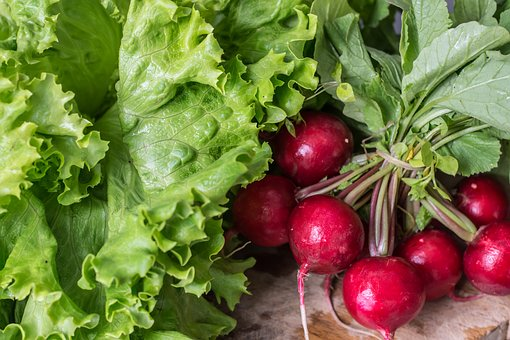Healthy Planet, Healthy Food, Healthy You!

Submitted by Climate Change Action Dufferin-Caledon
We are what we eat; which makes the decision of what kind of food we put into our bodies an important one. We’re told to eat a variety of fruits and vegetables, whole grains and lean meats more often to stay healthy. Did you ever give a thought to how your food was produced though? Most of us don’t, but what groceries you buy can make a huge difference to the health of our planet and thus ourselves in the long run. Let’s look at the differences between “factory farming or “traditional” agriculture and the alternative: regenerative agriculture.
In traditional agriculture a field is prepared for planting by tilling the soil which breaks it up, destroying weeds and plant root systems. It is then usually planted with a single, annual crop such as corn for example. A single plant type (monoculture) growing in one area is a potential feast for bugs that like to eat it. Given the abundance of food available on a big field of one plant type, a bug population can really explode. To stop bugs from damaging crops, traditional farmers spray them with pesticides. They may also have to use herbicides to control weeds, and fertilizer to correct any deficiencies in the soil that the plants are growing in. The crop is harvested, shipped off to market and the cycle begins over again the next year. The upside of this system is that it is easy to get machinery to do most of the heavy work. Vast amounts of food can be grown, processed and shipped with a minimum of manual labour. Now for the bad news….
Traditional agriculture is a huge contributor to climate change and to pollution from pesticides, fertilizers and herbicides. Along with deforestation and urban sprawl, it is responsible for the loss of half of the world’s topsoil in the past century and a half. Topsoil full of organic matter is needed to maintain healthy populations of bacteria and fungi needed for plant growth. It is needed to hold onto water in the soil and to hold onto carbon. If carbon isn’t in held in the soil and the plants, it’s in the air, warming our planet up. Pesticides don’t distinguish between crop pests, the bugs that eat pests and the pollinators that we depend on to ensure our plants make food. They kill all of them in equal measure and that’s a huge problem.
In contrast, let’s look at how nature manages food production. Have a look at a wild forest sometime and you’ll see that there are no monocultures in nature. Trees and other deep-rooted perennial plants pull nutrients up from the deeper layers of soil and allow water to percolate deeper into it. There is no tilling to disturb the soil fungi and bacteria. Also, everything in a forest returns to the soil once it’s life is over: fallen trees, leaves, dead animals and insects. This constant recycling of nutrients creates rich, deep topsoil and sequesters carbon in the plants and the soil. There is no need for fertilizer as the decaying vegetation feeds the bacteria and fungi in the soil which in turn feed the plants. This is the soil our ancestors found when they originally cleared land for farming here in Dufferin county. It is healthy soil and it grows healthy food.
We can take lessons from nature in how we grow our food, and this is a strategy we now call regenerative agriculture. There are lots of things we can do to improve soil health while growing food. Examples include planting perennial crops (like apple trees, nut trees and berry shrubs) with our annual crops. This increases biodiversity and limits the opportunities for bug pests to enjoy a population explosion. Eliminating or limiting tilling and planting cover crops for living mulch are other good ideas. Mulch helps control weeds, as any good gardener knows. Grazing animals have their role to play too. They are wonderful natural fertilizer dispensers and managed grazing strategies can be used to rehabilitate and enliven pastures while improving soil health and storing carbon back in the ground where it belongs.
So you can see that one apple is not always the same as another, depending on how it is grown. So where can you buy food that is produced by regenerative agriculture? It so happens that there are local farms that practice regenerative agriculture right here in Dufferin County. You can find a list of local farms and what they sell here: https://headwaters.ca/business/headwaters_farm_fresh_local_food_map/
It’s easy to find great food at our local farmers markets. Locally grown food is not transported hundreds of kilometers before it gets to your table, which helps reduce greenhouse gas emissions. Buying locally produced food also supports our local economy. Since Canadian labour laws mandate minimum wages and safe working conditions, you can feel good knowing that your food was grown and harvested by a fairly paid worker.
Another thing to consider is growing some of your own food. The principles of regenerative agriculture apply to home gardening as well and this is a great option for people on a budget. Seeds are inexpensive and a lot of people are happy to have you take their fall leaves home for free mulch if you ask. No yard? No problem! Community gardens are springing up all over the county and container gardening is also an option for people with small spaces. If you manage to grow more than you can eat, consider donating your extra produce to your local food bank or the Urban Harvest Program in Orangeville.
To Learn More: To learn more about Climate Change Action Dufferin-Caledon, please visit our Facebook page and click “like” to follow us!
 Headwaters Communities in Action
Headwaters Communities in Action







